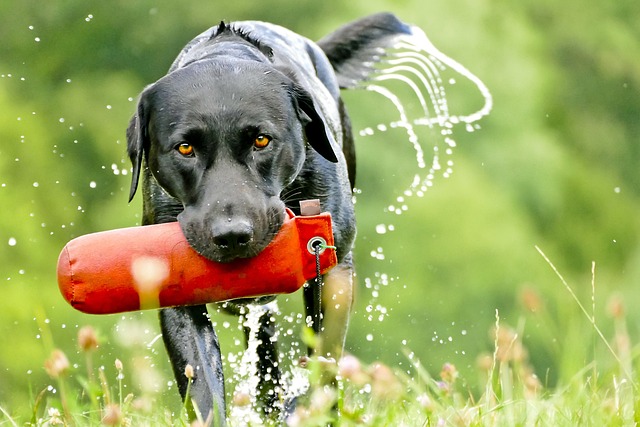
How can I tell if my dog's heatstroke is serious
Let’s be real: It’s a sticky August morning in Los Angeles, and you took your 2-year-old Golden Retriever, Max, for a walk a little later than usual
Mobility service dogs aren’t just pets—they’re lifelines, helping people with limited mobility open doors, retrieve dropped items, or even provide balance support when walking. But not every dog has the right mix of traits to take on this role. The best fits tend to blend intelligence, a calm demeanor, and just enough strength to assist without being overpowering.
Labradors often top the list, and it’s easy to see why. They’re eager to please, quick to learn, and their medium build means they can handle tasks like pulling a wheelchair or steadying a handler without being too big to maneuver in tight spaces. Golden Retrievers share that gentle nature, with a bit more fluff—though their friendly streak means they need extra training to stay focused in busy public spots. Then there are German Shepherds, known for their loyalty and stamina; they’re great for heavier tasks, but their protective instincts require careful socialization to ensure they stay calm around strangers.
 It’s not all about breed, though. A dog’s individual personality matters more than its pedigree. A Border Collie might be smart enough to learn commands quickly, but their high energy could make them restless during long periods of inactivity—hardly ideal for someone who needs steady support. On the flip side, a mixed-breed rescue with the right temperament could outshine a purebred in this role. That’s why reputable trainers often evaluate each dog’s drive, focus, and adaptability before starting mobility service dog training.
It’s not all about breed, though. A dog’s individual personality matters more than its pedigree. A Border Collie might be smart enough to learn commands quickly, but their high energy could make them restless during long periods of inactivity—hardly ideal for someone who needs steady support. On the flip side, a mixed-breed rescue with the right temperament could outshine a purebred in this role. That’s why reputable trainers often evaluate each dog’s drive, focus, and adaptability before starting mobility service dog training.
Training is non-negotiable, no matter the breed. These dogs need to master specific skills: opening drawers, pressing elevator buttons, or even helping a handler stand up. They also must stay composed in chaotic settings—think crowded malls or noisy transit stations. It’s a big commitment, and not all breeds take to this rigor equally. Breeds with a strong work ethic, like Standard Poodles, often thrive here; their intelligence pairs well with the repetitive training these roles demand.
Laws vary, but it’s crucial to remember that not every dog qualifies as a mobility service dog. In many places, they need to be trained to perform specific tasks related to a disability, and there are protections in place to ensure they can accompany their handlers in public spaces. Fake service dogs—pets dressed up without proper training—can make things harder for everyone, so sticking to legitimate training and certification helps keep these vital roles respected.
Size matters too, but not in the way you might think. A giant breed might seem like a good fit for heavy lifting, but they can be unwieldy in small apartments or crowded stores. A smaller, sturdy breed—like a well-trained Australian Shepherd—might be better for someone who needs help with lighter tasks but values agility. It’s all about matching the dog’s physical abilities to the handler’s specific needs, whether that’s carrying a backpack, pulling a cart, or just providing a steadying arm.
Finding the right mobility service dog is about connection as much as capability. The best pairings feel effortless, like the dog can anticipate needs before they’re spoken. Whether it’s a Labrador with a knack for fetching keys or a Golden that never misses a cue, the breed is just the starting point. What truly matters is the trust, training, and teamwork that turns a good dog into a life-changing partner—one that helps unlock more independence, one task at a time.

Let’s be real: It’s a sticky August morning in Los Angeles, and you took your 2-year-old Golden Retriever, Max, for a walk a little later than usual

You're enjoying a summer afternoon at the park when you notice your dog has stopped panting and appears disoriented - their gums are bright red

Let’s paint the picture: You’re in your Denver apartment, watching your 4-year-old Boston Terrier, Ruby, plop down mid-play session with her favorite toy

Many dog owners notice their pets nails seem shorter after regular walks,but how much does this daily activity actually help?The answer depends on where you walk—concrete sidewalks or asphalt streets gently file nails as a dog's paws hit the ground

Most dog owners notice their pup scooting across the carpet at some point, but few connect it to impacted anal glands. These small sacs near a dog’s rectum secrete a scent for marking territory

Most vets agree that regular dog teeth cleaning is key to avoiding painful dental issues later. For healthy adult dogs, a professional cleaning at the vet’s office every 12 to 18 months usually works well.